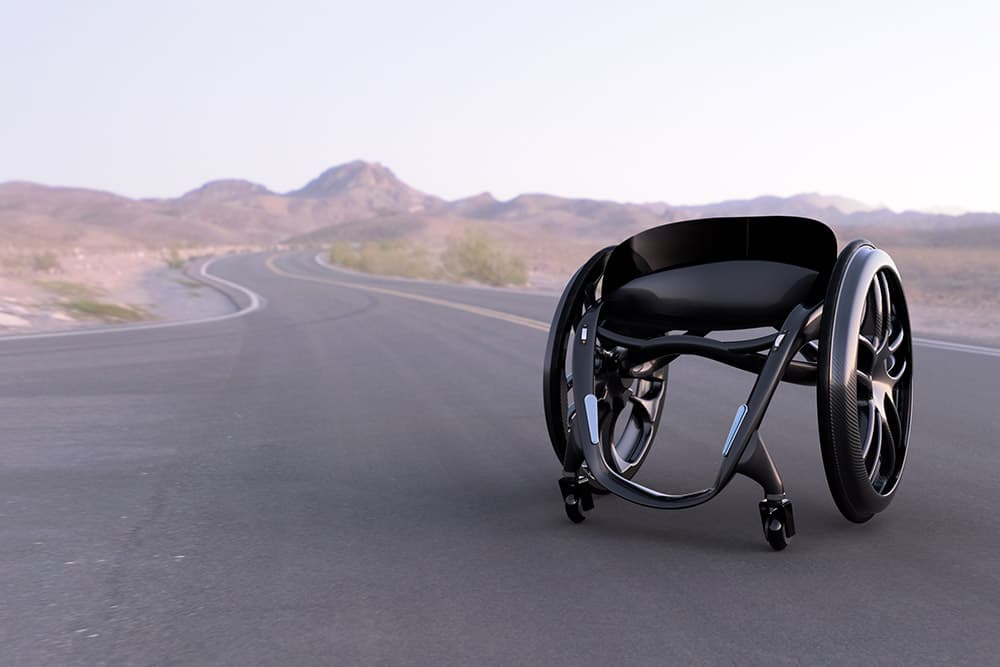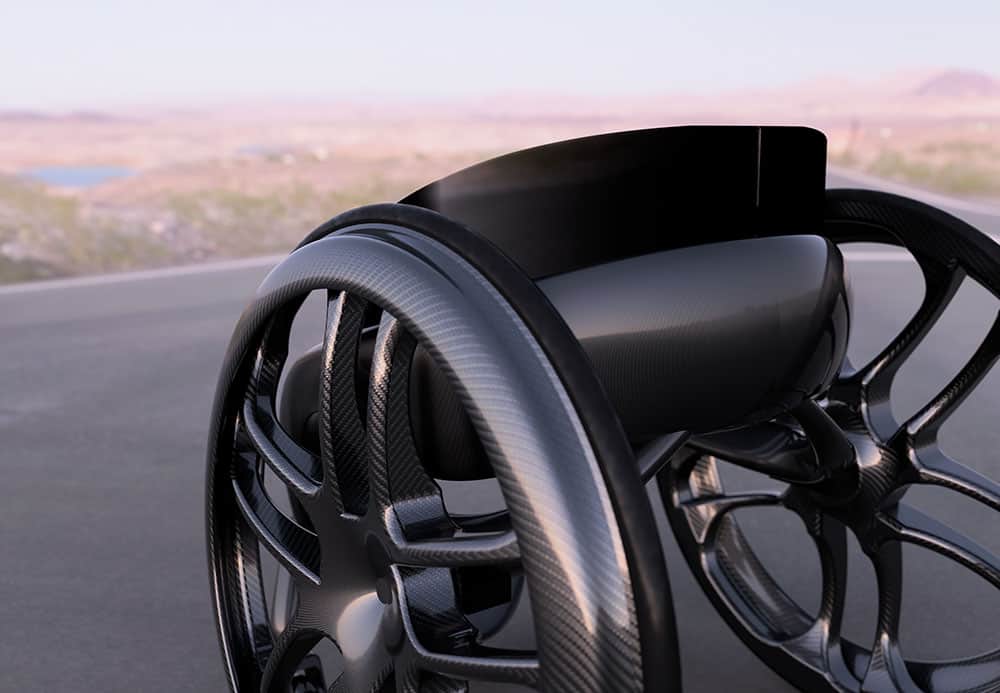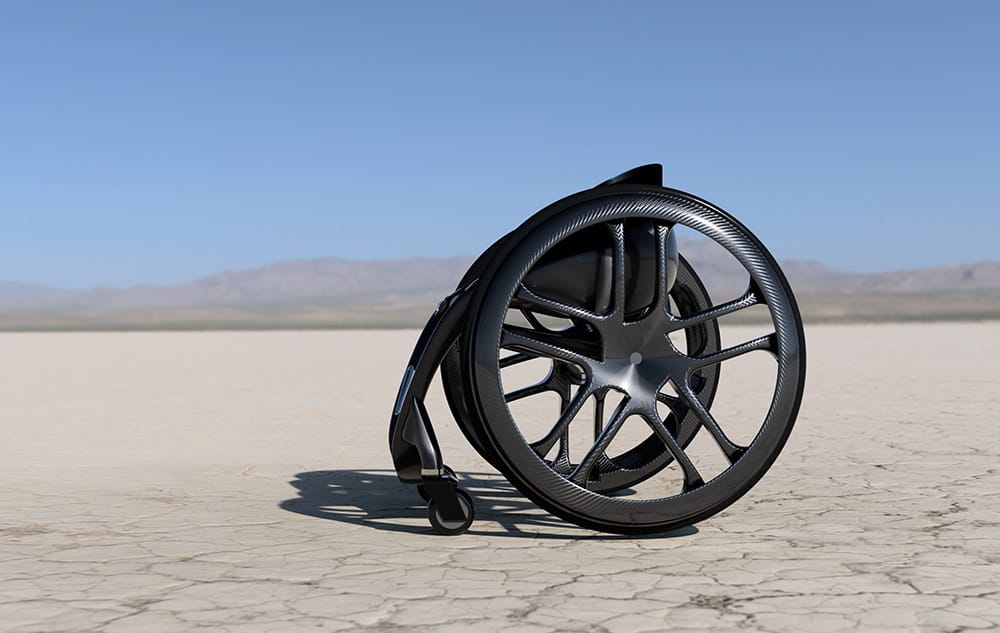Carbon Black creator looks to shake up manual wheelchair market with $500,000 grant

Andrew Slorance, the creator of the original Carbon Black wheelchair, is part of one of five teams from across the globe to have reached the finals of the three-year Mobility Unlimited Challenge for an ultra-lightweight, self-balancing, intelligent wheelchair which eliminates painful vibrations. The organisation will now receive half a million dollars to develop the product in hopes of winning a $1million prize.
The finalists were announced at this year’s popular CES event in Las Vegas, with Andrew’s Inverness firm Phoenix Instant being amongst teams from the United States, Japan, and Italy to reach the prestigious finals of the $4million global competition.
Launched in November 2017 by the Toyota Mobility Foundation, in partnership with Nesta’s Challenge Prize Centre, the Mobility Unlimited Challenge aims to improve the lives of millions of people with lower-limb paralysis.
“But now the work really begins, we’ve got eighteen months to turn the wheelchair which has been in the technological dark for so long into a futuristic device that intelligently makes wheelchair life easier.” Andrew Slorance
Inviting inventors, designers and engineers from all over the world to submit designs for ground-breaking innovations that incorporate intelligent systems to improve mobility and independence, Phoenix Instant managed to wow judges with its ultra-lightweight smart wheelchair concept.
The Phoenix AI Ultralight Wheelchair is designed to be a manual wheelchair made from carbon-fibre that will use smart sensors to configure itself to what the user does. It will allow the wheelchair to remain in sync with how the user moves, with sensors detecting if the user is leaning forward or back and algorithms calculating the wheelchair’s response.
According to Phoenix Instant, the wheelchair will include a number of smart functions yet to have been incorporated into wheelchair design, including an intelligent centre of gravity that will allow the device to continually adjust its centre of gravity to fit what the user does.
The team says it will make for a chair that is easier to push and turn by eliminating drag and uncomfortable, painful vibration whilst also making the chair safe from falling backwards. A lightweight power assist feature will also help users navigate slopes easier and an automatic braking system will remove the need for users to grip the wheels to slow down.
No stranger to carbon-fibre wheelchairs, accomplished product designer Andrew Slorance, Director of Phoenix Instant, has had his designed exhibited in the London Design Museum and created products sold worldwide.
A wheelchair user since the age of 14, Andrew now intends to use the grant and the global Mobility Unlimited Challenge to update and modernise the manual wheelchair.
“I’m delighted to have made it to the final five. I’ve worked towards this for years but didn’t expect to make it through!” commented Andrew.
“I’m so pleased the judges recognised that the wheelchair has proved itself as the most viable mobility device for decades and although it has done well it is now tired and in need of a serious makeover. I wanted to show how I think the wheelchair can be evolved while maintaining its core, proven fundamental capabilities that are behind its success as a mobility device.
“I wanted to be part of this Challenge because I broke my back when I was 14 which was now thirty-five years ago. By the time I was 16, I’d decided that I would one day design a wheelchair that would change perceptions by using cutting-edge materials and styling.
“I knew the next step beyond advanced materials has to be to make wheelchairs smart. But that costs a huge amount of money in development. So, when I saw this Challenge, I thought here is the money to develop this technology. No-one else is going to do it. No company is going to decide to spend half a million dollars on research and development to advance the manual wheelchair. Why should they? As long as their competitor also doesn’t do it the status quo can continue with wheelchairs remaining much as they were thirty-five years ago.
“This Challenge changes that. Being selected is just incredible. But now the work really begins, we’ve got eighteen months to turn the wheelchair which has been in the technological dark for so long into a futuristic device that intelligently makes wheelchair life easier.”
Each of the five finalists will use the grant of $500,000 to develop their concept further, with the final winner of the Challenge receiving $1 million in Tokyo in 2020.
https://thiis.co.uk/carbon-black-creator-to-shake-up-manual-wheelchair-market-with-500000-grant/https://thiis.co.uk/wp-content/uploads/2019/01/Phoenix_Ai_website_2.jpghttps://thiis.co.uk/wp-content/uploads/2019/01/Phoenix_Ai_website_2-150x150.jpgInvestments & FundingNewsroomSupplier NewsAndrew Slorance,Carbon Black,CES,innovation,Las Vegas,London Design Museum,Mobility,Mobility Unlimited Challenge,Nesta Challenge Prize,Phoenix Instant,smart technology,smart wheelchair,Toyota Mobility Foundation,wheelchairAndrew Slorance, the creator of the original Carbon Black wheelchair, is part of one of five teams from across the globe to have reached the finals of the three-year Mobility Unlimited Challenge for an ultra-lightweight, self-balancing, intelligent wheelchair which eliminates painful vibrations. The organisation will now receive half a...Calvin BarnettCalvin Barnettcalvin.barnett@bhta.comAuthorTHIIS Magazine



